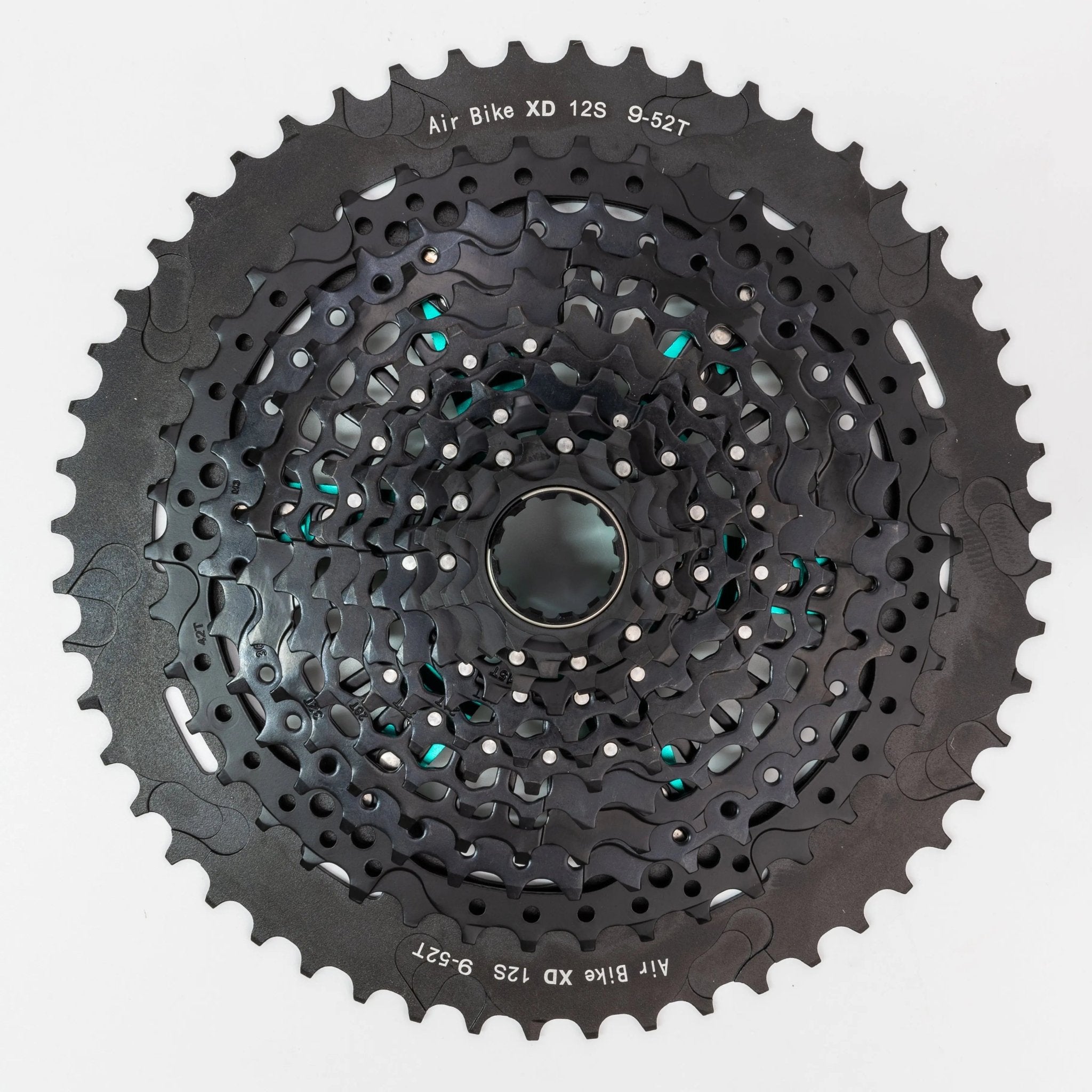I. Introduction
A. Brief Overview of a Bicycle Cassette
A bicycle cassette is an essential component of a bike's drivetrain, comprised of a series of sprockets with varying numbers of teeth. These sprockets are mounted together on a carrier, which is then attached to the rear wheel hub. The cassette works in tandem with the chain and chainrings to transmit power from the pedals to the rear wheel, propelling the bike forward. By offering a range of gear ratios, the cassette allows cyclists to adapt to different terrains and riding conditions for a more efficient and enjoyable ride.
B. Importance of Understanding Cassettes for Optimal Cycling Performance
Understanding the role and function of a bicycle cassette is crucial for achieving optimal cycling performance. By selecting the right cassette with the appropriate gear range and ratios, cyclists can optimize their pedaling effort, maintain a comfortable cadence, and tackle various terrains more effectively. Furthermore, a good understanding of cassettes can help riders make informed decisions when it comes to maintenance, ensuring smoother gear shifting, and prolonging the lifespan of their bike's drivetrain components.
II. The Basics of a Cassette
A. Definition of a Cassette
A bicycle cassette is a key component of the drivetrain, consisting of a series of sprockets with different numbers of teeth. These sprockets are mounted together on a carrier or spider, which is then attached to the rear wheel hub. The cassette works in conjunction with the chain and chainrings to transmit power from the pedals to the rear wheel, ultimately propelling the bike forward.
B. Role of a Cassette in a Bicycle's Drivetrain
The primary role of a cassette in a bicycle's drivetrain is to provide a range of gear ratios that enable cyclists to optimize their pedaling effort and maintain a comfortable cadence across varying terrains and speeds. As a rider shifts gears, the chain moves between the different sprockets on the cassette, effectively changing the gear ratio. Smaller sprockets with fewer teeth result in higher gears for faster speeds on flat terrain or descents, while larger sprockets with more teeth correspond to lower gears for climbing hills or tackling rough terrain. The cassette, therefore, plays a crucial role in the overall efficiency, performance, and versatility of a bicycle.
III. Cassette Variations and Specifications
A. Number of Sprockets and Their Effect on Gears
The number of sprockets in a cassette directly influences the number of available gears in a bike's drivetrain. Cassettes can have 8, 9, 10, 11, or 12 sprockets, with the number of gears in the transmission corresponding to the number of sprockets. A greater number of sprockets offers a wider range of gears, enabling cyclists to fine-tune their gear selection for optimal performance in various riding situations.
B. Sprocket Sizes and Their Impact on Gear Ratios
Sprocket sizes, determined by the number of teeth on each sprocket, play a significant role in defining a bike's gear ratios. A cassette's size is denoted by two numbers, such as 11-32t, where the first number represents the smallest sprocket's tooth count (the highest gear for fast pedaling at speed), and the second number represents the largest sprocket's tooth count (the lowest gear for climbing hills). The difference between these two numbers indicates the gear range, which affects the bike's performance on various terrains.
C. Examples of Narrow and Wide Gear Ranges
Narrow gear ranges, such as an 11-21t cassette, offer smaller differences between gears, making them well-suited for flat terrains or racing situations where maintaining a consistent cadence is crucial. Conversely, wide gear ranges, like an 11-34t cassette, provide larger differences between gears, making them more versatile and suitable for tackling diverse terrains, including steep climbs and off-road adventures.
IV. How Gearing Affects Cycling Performance
A. Gear Ratios for Different Terrains and Cycling Disciplines
The gear ratios provided by a cassette, in combination with the front chainrings, impact a bike's performance across different terrains and cycling disciplines. Bikes designed for various terrains, such as gravel, mountain, or touring bikes, require a wider gear range to accommodate the varying inclines and surface conditions. In contrast, professional race/time trial bikes benefit from a narrower gear range and smoother transitions between gears, which enable riders to maintain a consistent cadence and optimize speed and efficiency.
B. Importance of Selecting the Right Cassette for Your Bike
Choosing the appropriate cassette for your bike and riding style is essential for maximizing your cycling performance. By selecting a cassette with the right gear range and ratios, you can optimize your pedaling effort, maintain a comfortable cadence, and conquer different terrains more effectively. Additionally, using a well-matched cassette can improve gear shifting, reduce drivetrain wear, and prolong the lifespan of your bike's components.
V. Maintaining and Replacing Your Cassette
A. Signs of Wear and the Importance of Regular Maintenance
Regular maintenance of your cassette is essential to ensure smooth gear shifting and prolong the lifespan of your bike's drivetrain components. Over time, cassettes can wear out due to friction, dirt, and corrosion, resulting in poor gear shifting, increased drivetrain noise, and reduced efficiency. Look for signs of wear, such as worn or damaged teeth, uneven tooth profiles, or excessive dirt accumulation, and address any issues promptly to prevent further damage to other drivetrain components.
B. Tips for Cleaning and Lubricating Your Cassette
Keeping your cassette clean and well-lubricated is crucial for optimal performance and longevity. To clean your cassette, use a soft brush or a cassette cleaning tool to remove dirt and grime from the sprockets, taking care not to damage the teeth. After cleaning, apply a suitable lubricant to the cassette, ensuring that it reaches the chain and sprockets evenly. Regular cleaning and lubrication can help reduce wear and maintain smooth gear shifting, ensuring a more enjoyable and efficient ride.
C. When and How to Replace a Worn-Out Cassette
When your cassette shows significant signs of wear, such as worn or damaged teeth, it's time to consider a replacement. Replacing a worn-out cassette can improve gear shifting, reduce drivetrain noise, and prevent undue strain on other components, such as the chain and derailleur. To replace a cassette, you'll need a chain whip, a cassette lockring tool, and a wrench. Remove the rear wheel from the bike, secure the cassette using the chain whip, and use the lockring tool and wrench to remove the lockring. Slide the old cassette off the freehub body, replace it with the new cassette, and reinstall the lockring. Ensure that the lockring is tightened securely before remounting the wheel on your bike.
VI. Conclusion
A. Recap of Key Points About Bicycle Cassettes
Bicycle cassettes play a crucial role in a bike's drivetrain, providing a range of gear ratios that enable cyclists to optimize their performance across different terrains and riding conditions. Understanding cassette variations, specifications, and the impact of gearing on cycling performance can help riders make informed decisions when selecting and maintaining their bike's cassette.
B. Optimize Your Cycling Experience Through Informed Cassette Choices
By choosing the right cassette for your bike and riding style, and keeping up with proper maintenance, you can enjoy a smoother, more efficient, and satisfying cycling experience. We encourage you to use the information provided in this guide to make informed cassette choices, optimize your bike's performance, and enhance your overall cycling enjoyment.


